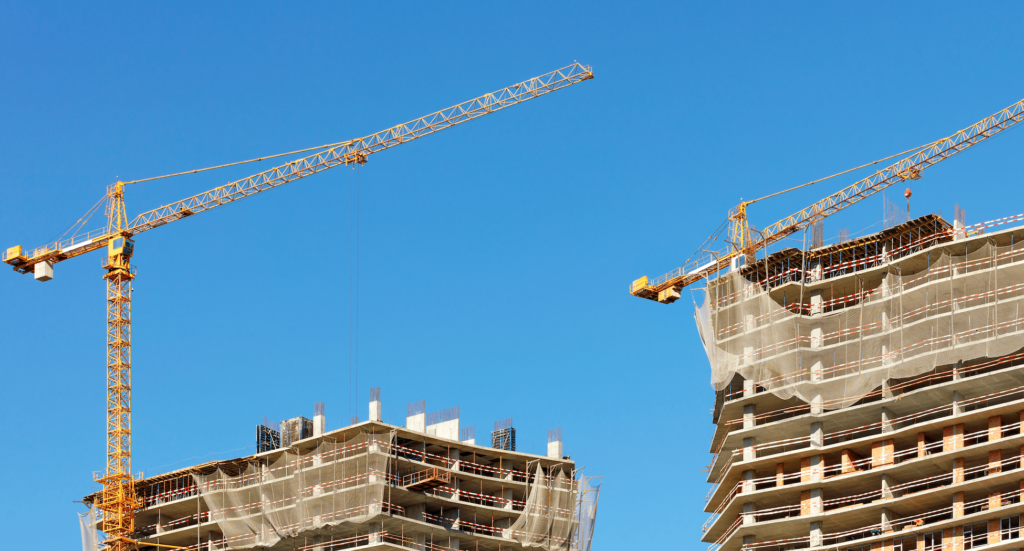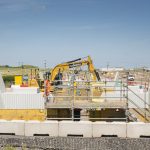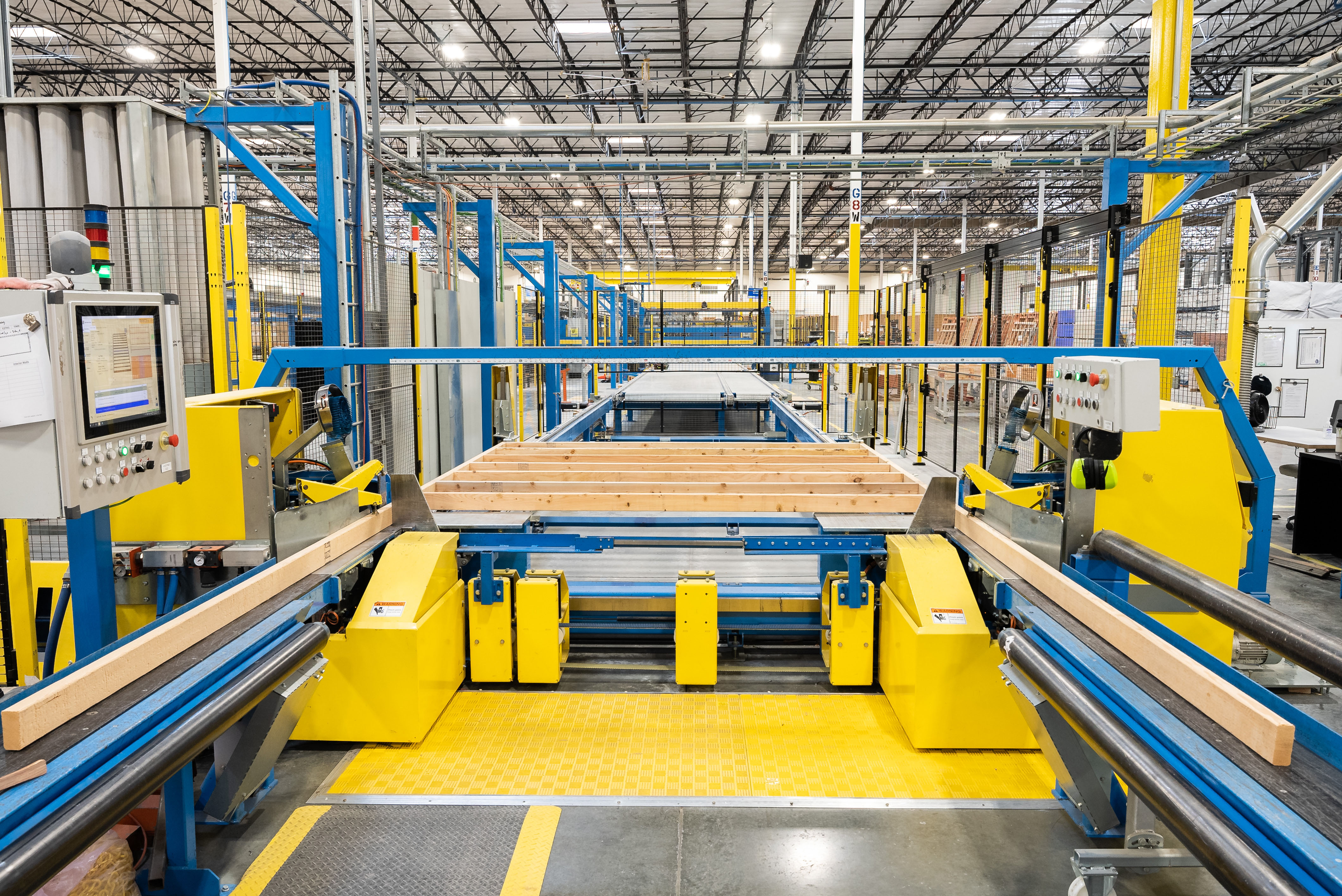News - Construction News
2022: The golden year for off-site

The construction industry has been waiting for an off-site revolution for over a decade. It has been six years since the government published the Mark Farmer review of the construction industry – ‘Modernise or Die’ – yet the industry has not yet taken the leap to be fully digital.
However, all this is about to change, says Des Duddy, Managing Director at Protrade. 2022 will be a ‘golden year’ for off-site manufacturing as construction becomes more efficient, he claims.
“Thanks to a perfect storm, though, we’re going to see MMC and off-site manufacturing boom,” he says.
In this article, Des explores why MMC and off-site manufacturing will become invaluable to the construction sector as it enters a crucial point in its journey to return to pre-pandemic levels by 2023.
MMC (Modern Methods of Construction) and off-site manufacturing are nothing new. However, its adoption as the primary method of working across the industry has been accelerated by the need for construction to be far more efficient after a rough couple of years.
Prior to 2022, the off-site construction of buildings, building elements and structures accounts for around 2% of the total construction market.
The three main benefits of MMC and off-site manufacturing beyond efficiency
There are three obvious benefits to the country and the economy:
- the first is the commercial gain
- its ability to give companies a competitive edge
- improve the sector’s capability to meet demand after a pandemic that saw multiple projects mothballed and kicked into the long grass during 2020 and 2021.
Off-site manufacturing techniques have progressed significantly over the last few years, moving it on significantly from a time when it was used mainly as temporary accommodation.
Instead, what we now have are buildings and structures that are produced to incredibly high and repeatable standards, as we saw with the hospital that was built in Wuhan in just 10 days.
A word on supply shortages, raw material price inflation, and demand… it’s only going to get worse
It’s no secret that the supply shortages and lead times construction has faced over the last 18 months caused issues with projects across the country, with housing associations and local authorities grappling with limited supplies as well as soaring prices that reached a 40-year high for the industry.
The prices we’re seeing in the market are not going to change. The shortage that is being faced isn’t going to disappear. If anything, that demand and the inflation of price is only going to increase, especially with the USA’s historic infrastructure bill, worth an eye-watering $1.2 trillion, that was passed in November by the US Senate.
This alone is creating a new wave of competition and demand for labour and raw materials – one that will even outweigh the problems that were faced last year.
But, the reality is Britain needs to build and construction will continue to be a vital sector for the UK economy. It’ll simply cost more. In order to combat these ongoing problems, the onus is on construction professionals to shift to a more viable option.
That obvious alternative is off-site manufacturing.
Off-site manufacturing’s influence was growing in the new build market – now it will become essential
Back in 2018, the Government laid out its plans to combat the growing housing crisis in the UK. However, since the pandemic hit, off-site manufacturing’s role has been accelerated to a point where it, in my opinion, needs to be considered essential.
A report by Savills, one of the biggest retail estate agents in the UK, showed that the proportion of new homes built using MMC was currently between 6-10%. In the new builds market, that is going to increase significantly, especially with the Homes England programme, which is aiming to make a quarter of affordable homes from MMC.
We know Lloyds Bank has the ambition to become the biggest landlord in the country and as part of their intention to buy 50,000 homes over the next decade, the likelihood is they’re going to need to build some of those properties.
As well as dealing with those ongoing supply shortages and price hikes, using traditional building methods to fulfil their needs is not commercially viable. Missing out on rental income is a huge incentive for businesses and institutions to get the homes built rapidly, and there’s no faster construction method than off-site manufacturing, which strips away the myriad of factors, like weather, site access, permissible working hours, and noise pollution, that can impact a project.
If you could purchase a plot of land and know that the house would be finished and ready to move in within four weeks, the financial savings would be significant… not to mention the huge reduction in stress levels!
Concerns over build quality are no longer relevant, with many off-site homes now offering a mortgageable 60-year warranty. Even hospitals, schools and commercial properties are looking towards modern methods of construction.
Why? Because the possibilities are endless.
How fast-food brands like McDonald’s and KFC showed the importance of MMC and off-site manufacturing
There has been what some have called a quiet revolution taking place for some time with MMC and off-site manufacturing, one that the retail and fast food sectors have been ahead of the game on.
This approach was actually made popular by brands like McDonald’s and KFC, both of which calculated the huge sums of lost revenue caused by not having a fully finished restaurant as each day passed during the construction process.
McDonald’s, in particular, uses prefabrication technology for its units and its that method that allows that business to complete new outlets on pre-existing groundworks in just 13 hours.
Once planning permission has been granted, the time to store opening is dramatically cut, all while it is creating savings in equipment, labour, fees and other expenses associated with a large scale build. The benefits are two-fold and this rise in interest in MMC and off-site manufacturing is generating jobs and bringing new skills and diversity to the workforce.
Fast turnarounds. Quality buildings. Minimal costings and materials. Restricted loss of earnings. That keyword again: efficiency. It is to see why this method is being adopted more and more.
Where do MMC and off-site manufacturing sit in as part of your strategy?
The facts are clear.
What we know is that off-site manufacturing is much more efficient and provides more accountability and the ability to control costs. The price of raw materials is going to continue to rise and the construction industry needs to find savings in other areas.
Again, efficiency is the keyword. Using the T30 Tower hotel, the 57-storey tower, and the Huoshenshan hospital as examples, they are three projects that, ordinarily, would have taken a year or two – possibly longer – to build traditionally and would have required huge funding from the bank.
All of that has been avoided and brought huge savings.
It will be these types of savings that will help to offset rising materials and labour costs and we’re going to be seeing far more examples of projects like these in the near future as the construction sector continues to climb back to its feet.
If you would like to read more stories like this, then please click here
Related Articles
More News
- SMEs remain unprepared as cyber threats escalate
19 Apr 24
SMEs neglect cyber security, making them easy targets for a wide range of attacks, including
- I&G to build new Rob Burrow Centre for Motor Neurone Disease
18 Apr 24
I&G has been appointed to build the new Rob Burrow Centre for Motor Neurone Disease
- Glasgow Ship Build Hall progress
17 Apr 24
Turner & Townsend has been appointed as the New Engineering Contract Project Manager to support






